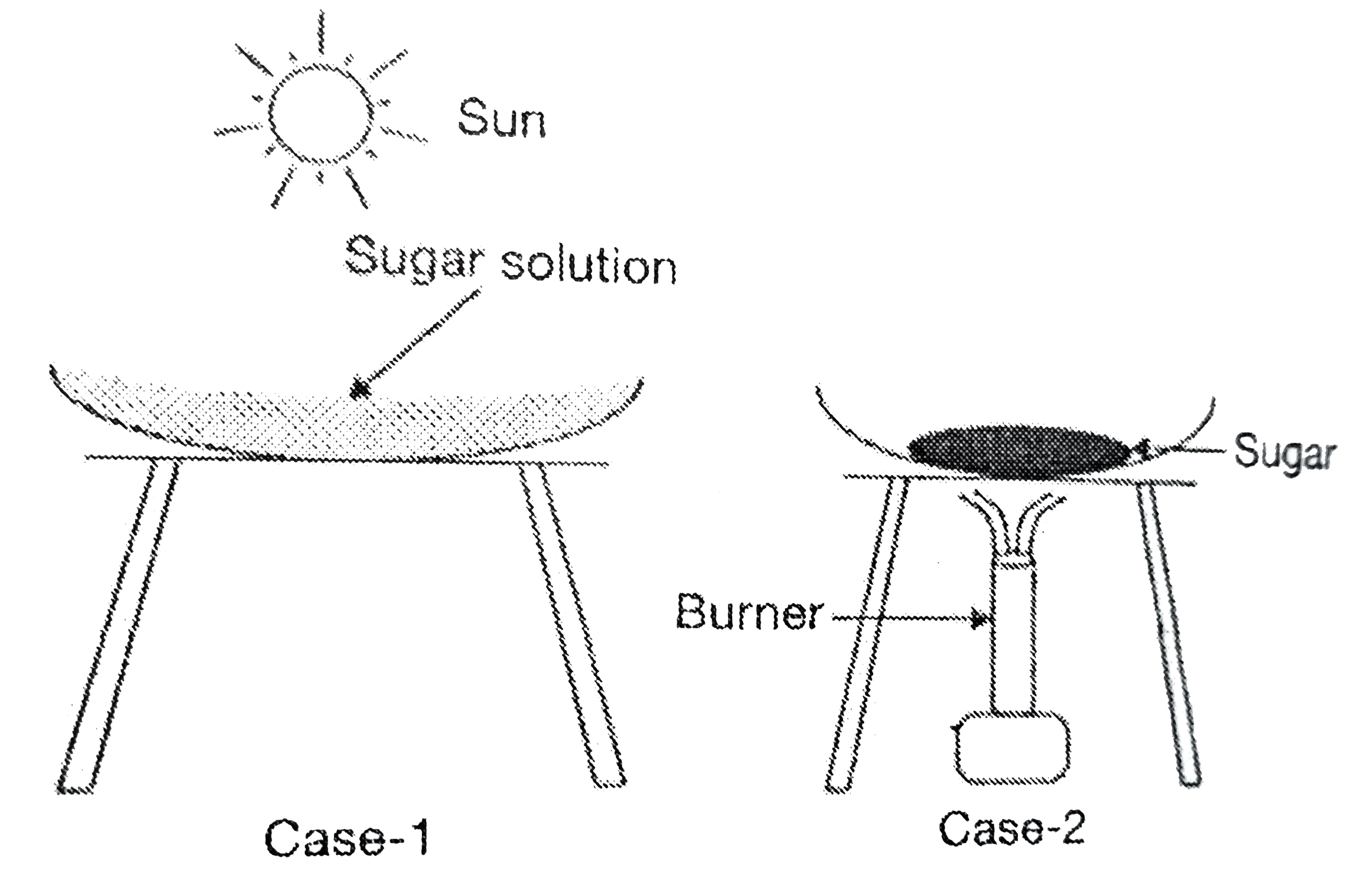
Analyse the observation of the above experiments
In case 1 evaporation of water takes place which is a physical change.
In Case 2 sugar undergoes melting at the start which is a physical change.then sugar gets convertted to black-coloured substance called carbon which is a chemical change.
Topper's Solved these Questions
- LANGUAGE OF CHEMISTRY AND CHANGES AROUND US Book:PEARSON IIT JEE FOUNDATIONChapter:LANGUAGE OF CHEMISTRY AND CHANGES AROUND US Exercise:Crossword
Explore 2 Videos
- LANGUAGE OF CHEMISTRY AND CHANGES AROUND US Book:PEARSON IIT JEE FOUNDATIONChapter:LANGUAGE OF CHEMISTRY AND CHANGES AROUND US Exercise:TEST YOUR CONCEPTS (VERY SHORT ANSWER TYPE QUESTIONS) FILL IN THE BLANKS
Explore 13 Videos
- LANGUAGE OF CHEMISTRY AND CHANGES AROUND US Book:PEARSON IIT JEE FOUNDATIONChapter:LANGUAGE OF CHEMISTRY AND CHANGES AROUND US Exercise:Concept Application
Explore 10 Videos
- AMAZING AIRBook:PEARSON IIT JEE FOUNDATIONChapter:AMAZING AIRExercise:Crossword
Explore 1 Video
- MYSTERY OF MATTER Book:PEARSON IIT JEE FOUNDATIONChapter:MYSTERY OF MATTER Exercise:CROSSWORD
Explore 1 Video
Similar Questions
What are the observations of α-ray scattering experiment ? Based on thse obervations , how did Rutherford disprove Thomson's model ?
View SolutionIn an experiment, a student took pure liquid and started boiling. He noted the boiling temperature of that liquid. After he took sand solution and started boiling and he noted the temperature. Based on the above experiment, what is his observation?
View Solution
Knowledge Check
Which of the following was not a observation in Hershey and Chase experiments
ABacteria that were infected with viruses that had radioactive DNA wre radioactiveBBacteria that were infected with viruses that had radioactive proteins were radioactive.CDNA was the material that passed from the virus to the bacteriaDProteins did not enter the bacteria from the virusesA scientist performs an experiment in order to measure a certain physical quantity and takes 100 observations. He repeats the same experiment and takes 400 observations, by doing so
AThe possible error remains sameBThe possible error is doubledCThe possible error is halvedDThe possible error is reduced to one fourthThe stain solution used in the above experiment stains ___________
AcytoplasmBchromosomesCspindle fibresDentire nucleus
A science student takes 100 observations in an experiment. Second time he takes 600 observations in the same experiment .By doing so the possible error becomes:
View SolutionList three observations of the experiment performed by Rutherford for his model of an atom.
View SolutionFor the following observations of marks of 5 students of a tutorial group:
Marks out of 25:8,12,13,15,22
Then the standard deviation of the above observation is
View SolutionThe essential observation made by Mendel in his experiments on inheritance in pea plants was that
View SolutionStanley miller observed the formation of ______ during the experiment.
View Solution
